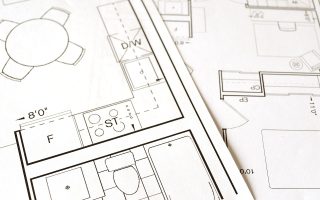The way we approach interior space design has been completely transformed by artificial intelligence (AI). AI tools provide a plethora of opportunities to unleash your creativity and realize your idea, whether you’re a homeowner looking to update your living environment or a professional interior designer.
We’ll look at how AI tools may be used to make beautiful interior design spaces in this extensive guide.
Artificial Intelligence is a valuable tool for creating the ideal atmosphere, since it may help with idea generation, concept visualization, and space optimization.
Understanding AI in Interior Design
Within the interior design industry, artificial intelligence (AI) has become a game-changer. However, what does AI actually mean and how does it operate in the context of interior design?
AI in interior design basically means using data analysis and computer algorithms to improve the design process. These algorithms can learn from data, spot patterns, and make predictions because they are designed to resemble human intelligence.
Artificial intelligence (AI) systems are capable of carrying out activities related to interior design, including trend analysis, design element suggestion, and even forecasting decision outcomes.
Analyzing Data and Forecasting Trends
Data analysis and trend prediction are two main applications of AI in interior design. AI algorithms are able to recognize new trends and popular design styles by sifting through enormous volumes of data from sources like social media, design websites, and trade journals.
For instance, AI-powered websites like Pinterest and Houzz track user activity and behavior over time to determine the hottest colors, design motifs, and home accents. Based on the user’s surfing history and preferences, this data is then used to suggest design inspirations to them.
Customized Suggestions
The capacity of AI to offer customers customized recommendations is another important feature in interior design. In order to customize design recommendations to each user’s unique interests and preferences, AI algorithms can evaluate user data, including browsing history, historical design choices, and demographic data.
AI algorithms can recognize a user’s liking for minimalist interiors and Scandinavian furniture types, for example, and suggest products and design concepts that are similar to these. This customized method not only saves customers time and effort during the design process, but it also aids in the discovery of fresh design inspiration.
Efficiency and Automation
AI is also essential for automating monotonous jobs and expediting the design process. AI-driven software, for instance, may produce mood boards, 3D models, and even recommend furniture arrangements depending on user input.
In addition to saving designers time, this automation enables them to swiftly and effectively consider a variety of design possibilities. AI algorithms may also evaluate design layouts and offer comments on elements like harmony, balance, and aesthetic appeal. This helps designers iterate their ideas and arrive at wise choices.
Analysis of Predictive Design
Predicting how decisions in design will turn out is one of the most interesting uses of AI in interior design. Artificial intelligence (AI) algorithms can predict how certain design decisions will affect the appearance and feel of a space by examining past data and design trends.
AI-powered software, for instance, can mimic the appearance of various paint colors on walls, the way furniture arranges itself to effect traffic flow, or even the way natural light interacts with various window coverings. With the use of predictive analysis, designers can theoretically test various design scenarios prior to executing them in real life, which lowers the possibility of expensive errors and ensures the intended result.
In conclusion, artificial intelligence (AI) in interior design has many applications, including trend analysis and
Coming Up with Design Concepts
Coming up with original concepts that fit your own preferences and style is one of the trickiest parts of interior design. Here’s where AI can be quite beneficial. AI-driven design platforms may create customized design concepts by analyzing your preferences, likes, and even the decor you already have.
For instance, AI algorithms are used by Pinterest and Houzz to suggest design ideas based on your saved photos and browsing behavior. These services allow you to submit photographs of your preferred styles or simply enter keywords to build a tailored feed of design ideas to get your project off to a quick start.
Putting Ideas Into Pictures
It’s time to make your interior design ideas a reality once you have a general notion of how you want it to look. Creating mood boards, sketches, and 3D models was the traditional method for doing this, and it may be expensive and time-consuming. But now that AI is powering visualization tools, this process is more efficient and easily accessible.
You can easily build virtual mood boards and room layouts with tools like Roomstyler and Morpholio Board. To explore how furniture, décor pieces, and color schemes interact in real time, just drag and drop them onto a digital canvas.
Some of these apps provide AI-powered recommendations based on your design tastes, but most come with pre-loaded libraries of furniture and decor items.
Space Optimization: Making the most of available space is essential to interior design, particularly in smaller or atypically formed spaces. Artificial intelligence (AI) algorithms are able to evaluate floor layouts and provide layout arrangements that optimize spatial efficiency while preserving visual attractiveness.
AI algorithms are used by platforms like Space Designer 3D and Homestyler to assess the sizes of rooms and furnishings in order to recommend the best configurations. These tools allow you to enter the size of your room and the furniture you want, and they will then provide you with a number of layout alternatives. Before making any purchases, you can see how furniture will fit and seem in your room thanks to some tools’ augmented reality (AR) characteristics.
Tailoring Designs
Creating a setting that accurately captures your personality and way of life requires personalization. AI tools can help tailor designs to your unique requirements and tastes.
For instance, Modsy is an AI-powered interior design tool that lets you see many design alternatives and generates 3D renderings of your space. Additionally, you can work in-person with qualified designers to customize the design to your preferences and financial situation.
Conclusion
In summary, artificial intelligence (AI) techniques have completely changed the interior design industry, making it more individualized, effective, and accessible than before. AI can help you unlock your creativity and realize your ideas in the design process, whether you’re a professional designer or a do-it-yourself enthusiast.
AI tools provide a wide range of skills to maximize space, generate design ideas, visualize concepts, and customize designs, among other things, to improve interior design efficiency.




